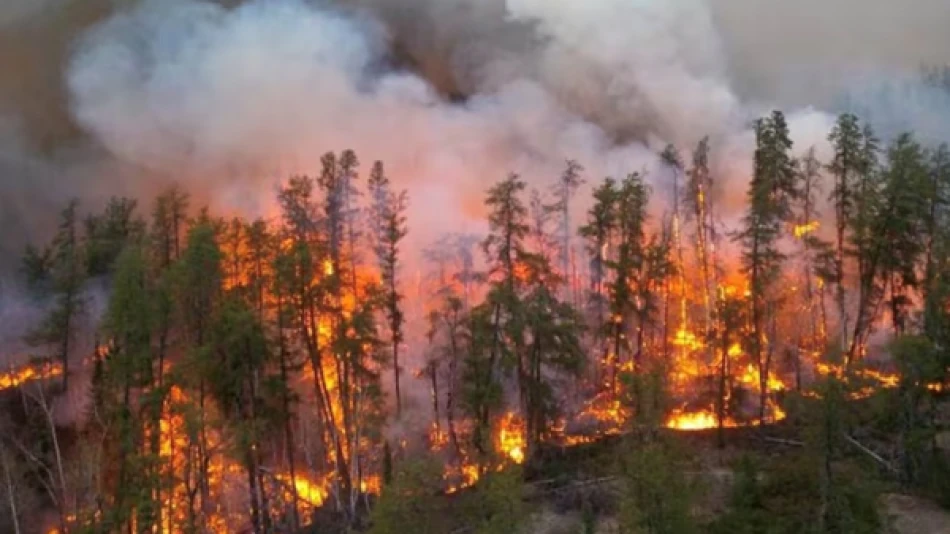
Raging Wildfires Devastate 6 Million Hectares of Canadian Forests
Canada Faces Second-Worst Wildfire Season on Record as Climate Crisis Accelerates
Canadian authorities reported that wildfires have consumed approximately six million hectares of land this year, marking one of the most devastating fire seasons in the country's history. The scale of destruction underscores how rapidly changing climate conditions are transforming Canada into a tinderbox, with temperatures rising twice as fast as the global average and creating increasingly volatile fire conditions across the nation's vast forests.
A Pattern of Escalating Destruction
According to Michael Norton, spokesperson for the Department of Natural Resources, the current burned area ranks as the second-highest recorded for this time of year, trailing only the record-breaking 2023 season. That catastrophic year saw nearly 18 million hectares consumed by flames, setting a benchmark that highlighted the new reality of Canadian wildfire management.
Despite more than 560 active fires currently burning across the country, Norton characterized this year's fire pattern as "more natural" compared to the "unusual" summer of 2023. This distinction reveals how dramatically last year's season disrupted normal expectations, forcing officials to recalibrate what constitutes typical wildfire activity.
The Climate Acceleration Factor
Canada's unique vulnerability stems from its position on the front lines of global warming. The country experiences temperature increases at double the global rate, creating a feedback loop that transforms its boreal forests into increasingly combustible landscapes. Warmer temperatures lead to earlier snowmelt, longer dry seasons, and more frequent lightning strikes—the perfect storm for wildfire ignition and spread.
Comparing Global Fire Trends
Canada's wildfire crisis mirrors patterns seen across other northern regions. Russia's Siberian forests have experienced similar acceleration in fire activity, while Scandinavia faces comparable challenges. However, Canada's situation stands out due to the proximity of major population centers to fire-prone areas and the country's role as a significant carbon sink—meaning these fires don't just destroy property, they release massive amounts of stored carbon into the atmosphere.
Economic and Environmental Implications
The escalating wildfire seasons carry profound economic consequences. Insurance companies are reassessing coverage in fire-prone regions, while the forestry industry—a cornerstone of Canada's economy—faces mounting uncertainty. The tourism sector, particularly in wilderness areas, must adapt to unpredictable closures and air quality concerns that can extend hundreds of miles from active fires.
From an environmental perspective, each severe fire season reduces Canada's capacity to act as a global carbon sink. The country's forests normally absorb significant amounts of CO2, but widespread fires reverse this process, releasing decades of stored carbon and accelerating the very climate change that makes future fires more likely.
The New Normal Requires New Strategies
The fact that officials now describe a six-million-hectare burn as "more natural" signals a fundamental shift in wildfire management philosophy. Traditional fire suppression strategies, designed for historical fire patterns, may prove inadequate for the new climate reality. This suggests Canada will need to invest heavily in prevention, early detection systems, and community resilience measures rather than relying primarily on reactive firefighting efforts.
The trajectory is clear: as global temperatures continue rising, Canada's wildfire seasons will likely become more intense, longer, and more unpredictable. The question isn't whether this trend will continue, but how quickly Canadian society can adapt its infrastructure, economy, and emergency response systems to match the pace of environmental change.
Most Viewed News

 Layla Al Mansoori
Layla Al Mansoori






